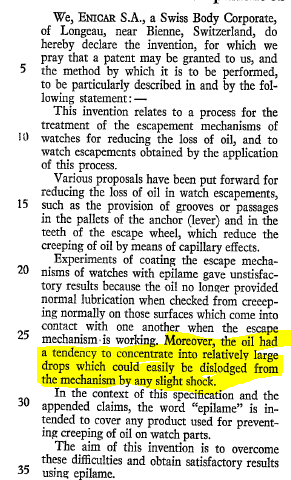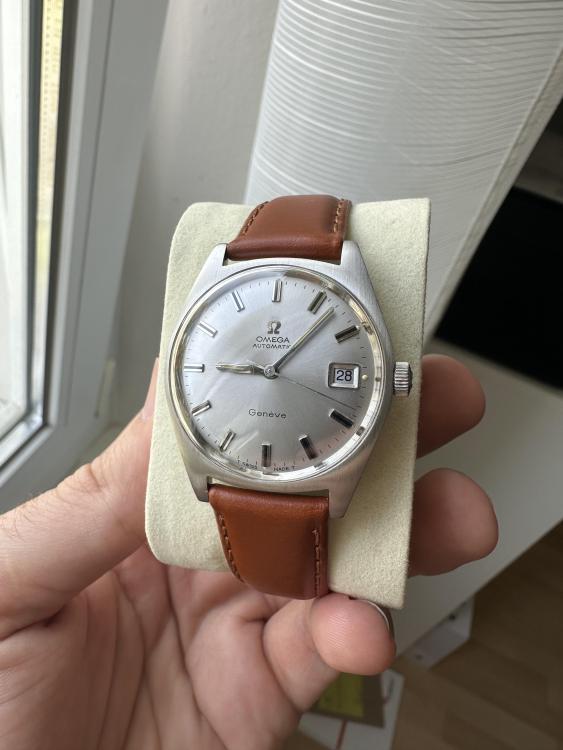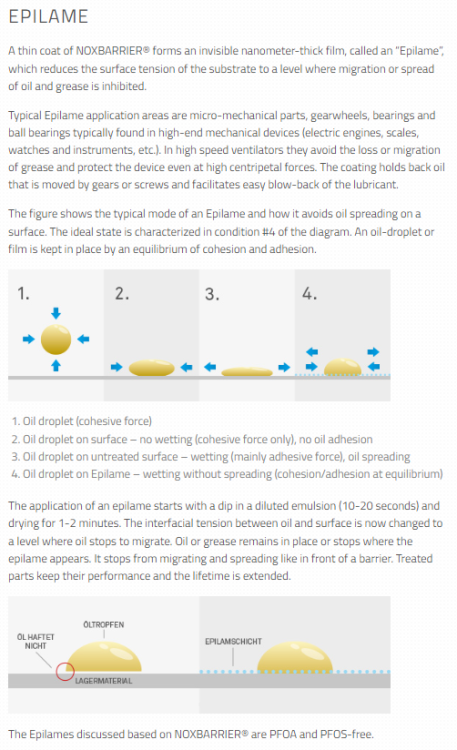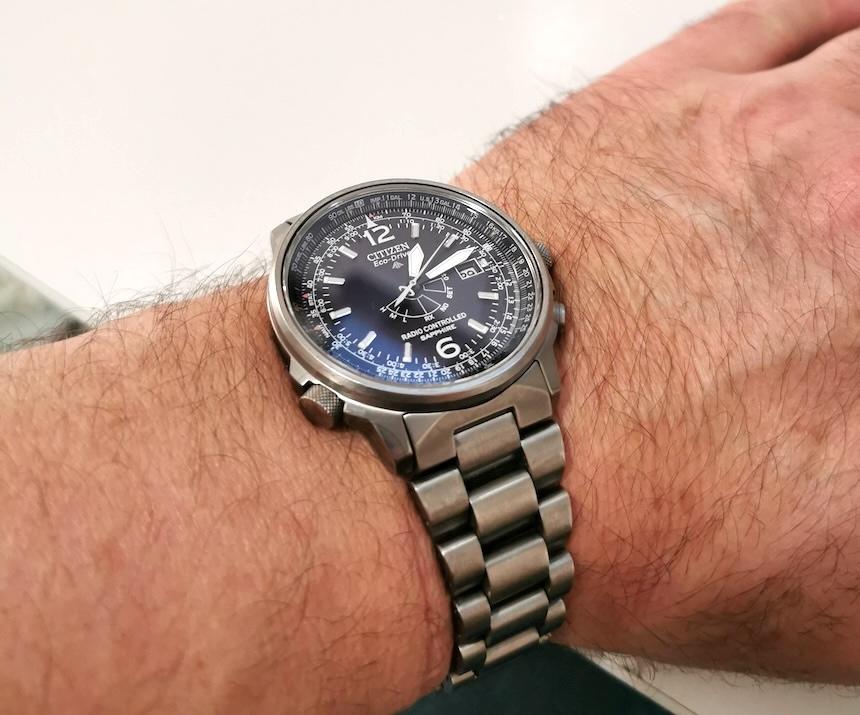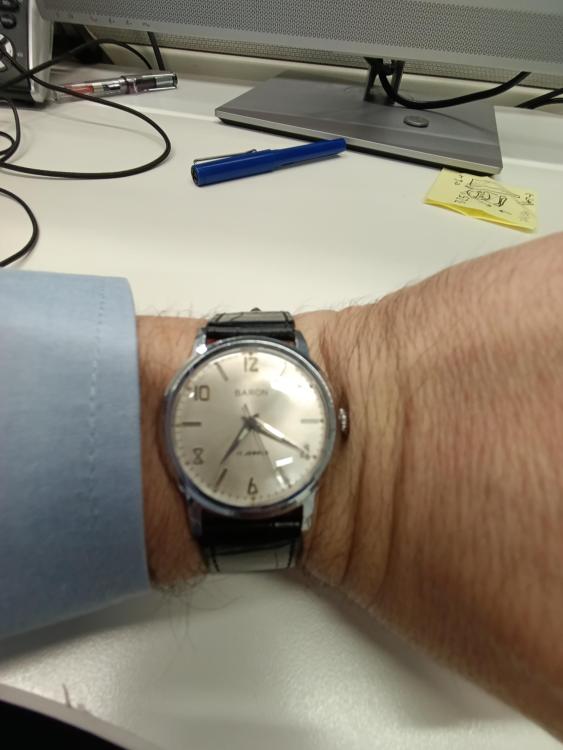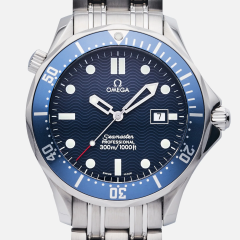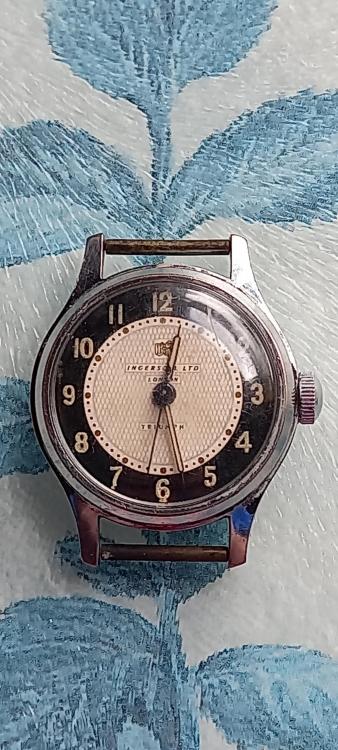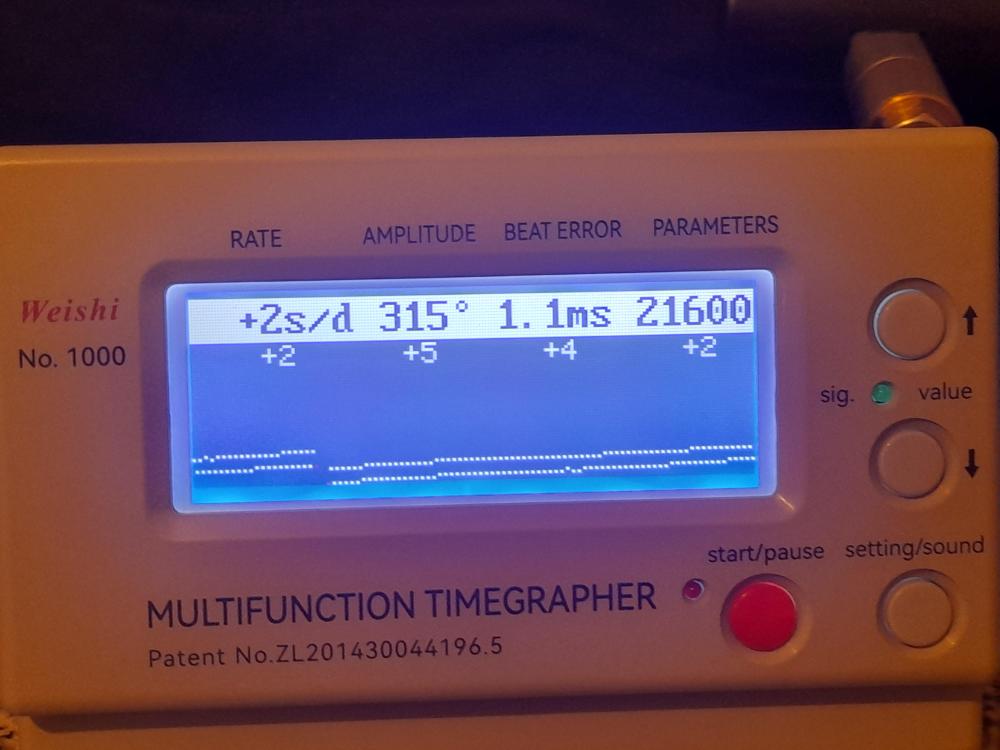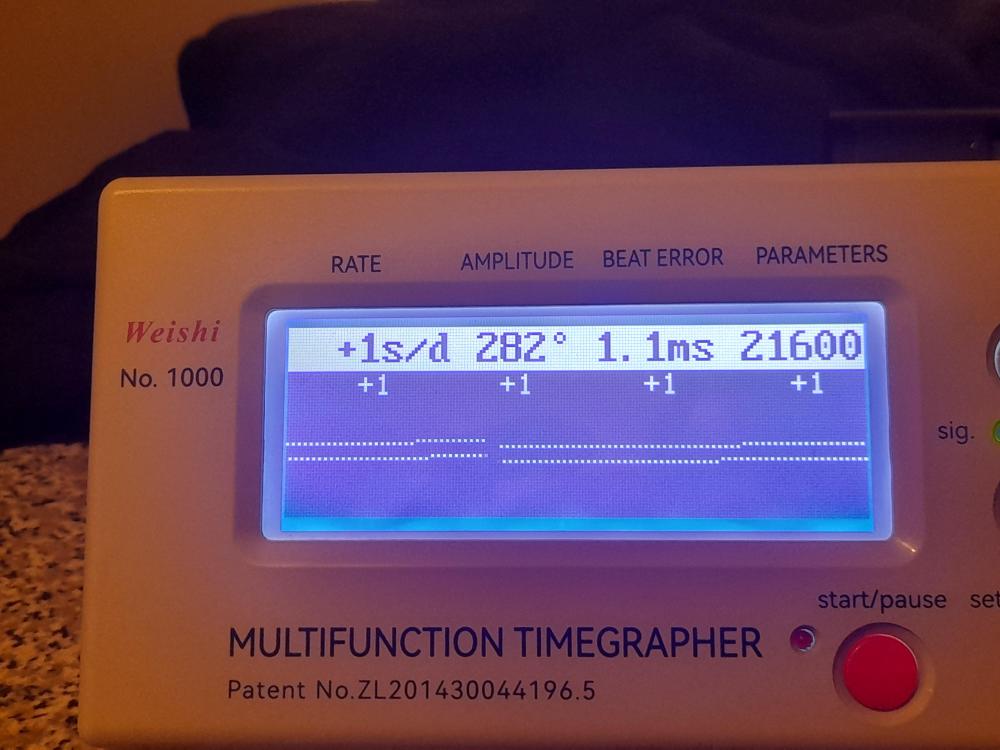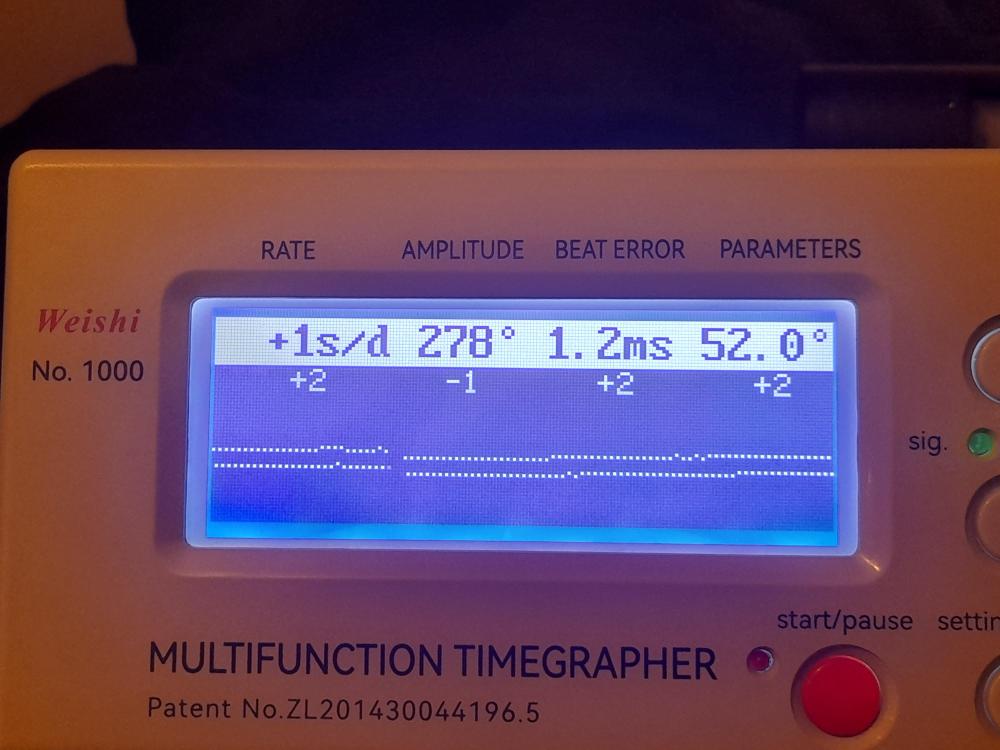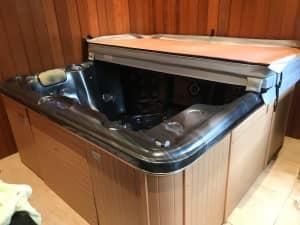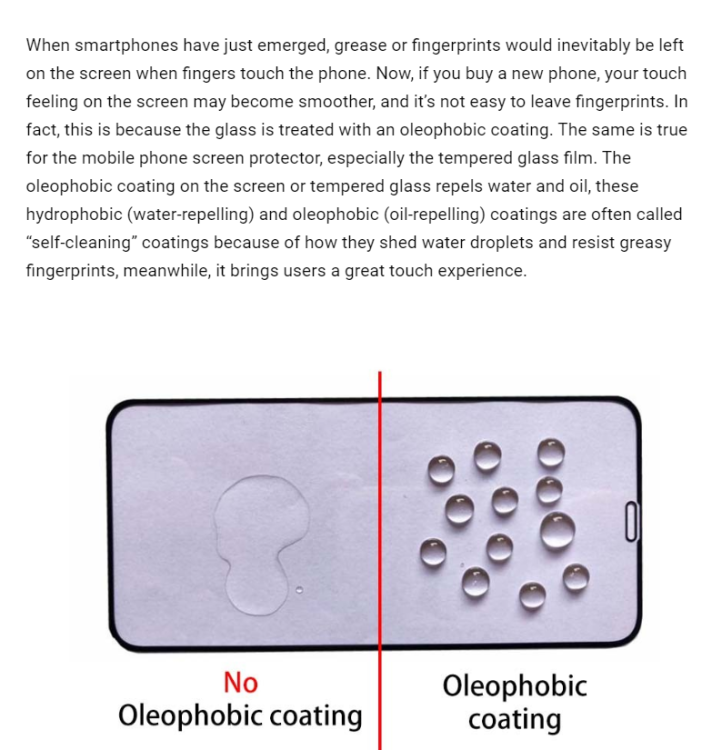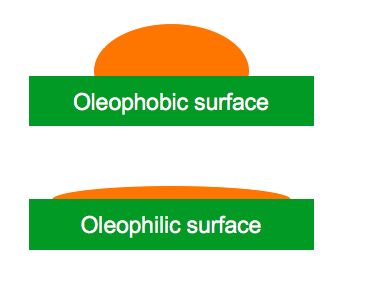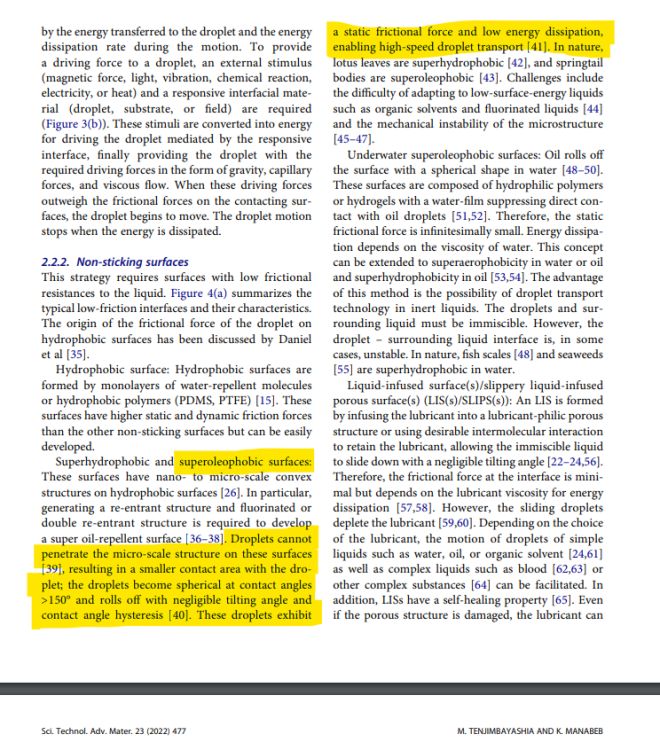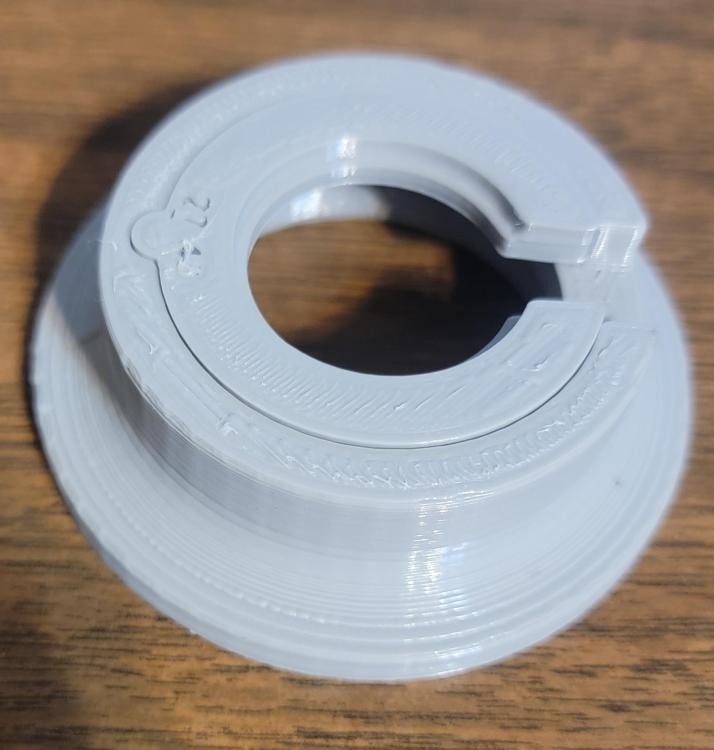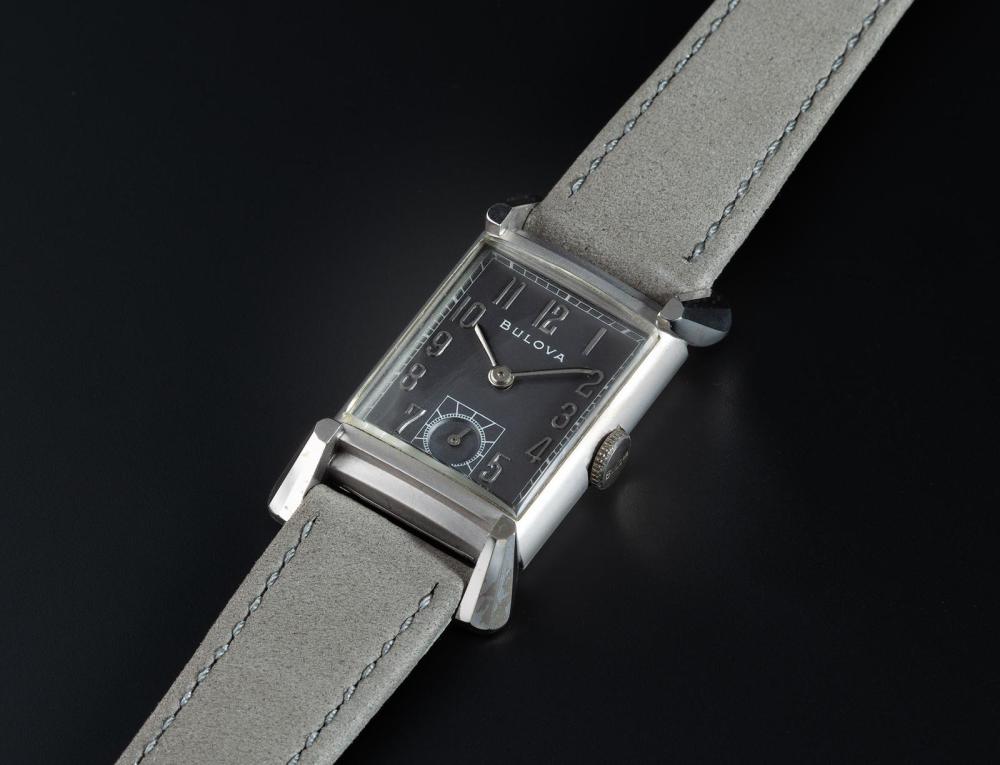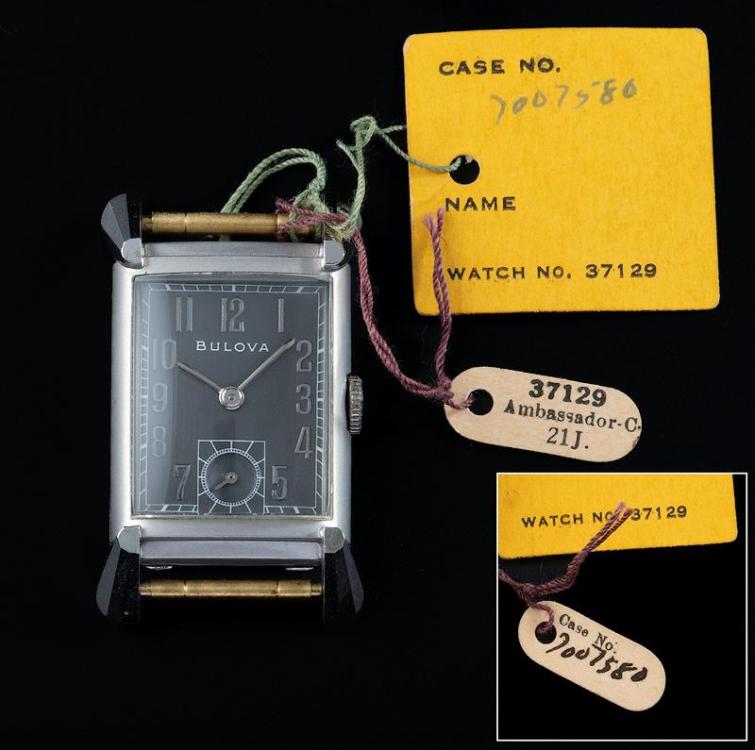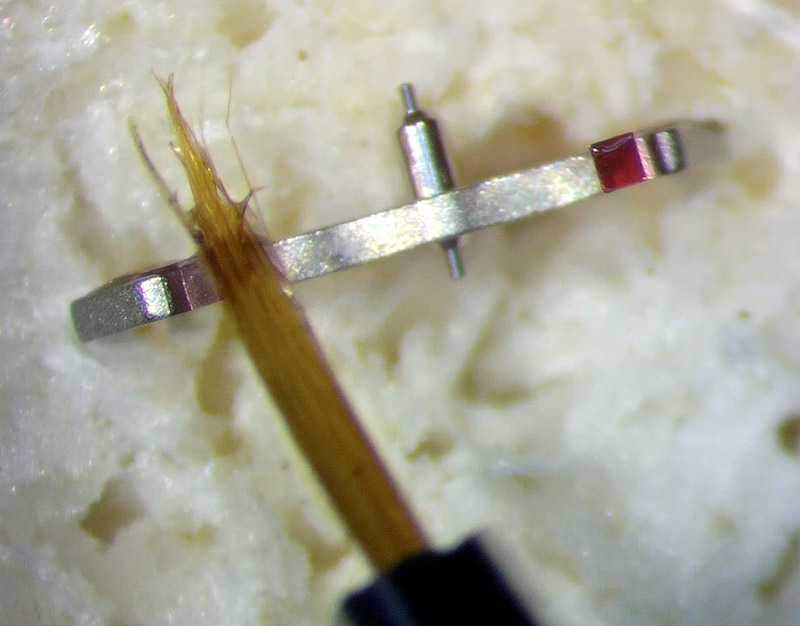Leaderboard
Popular Content
Showing content with the highest reputation on 04/29/24 in Posts
-
one little minor problem with your chemistry experiment here which is what exactly is epilam? In other words is it an exact substance with the chemical you specify or is it a term? For instance originally it was steric acid either dissolved in some sort of solvent or it was applied by vaporizing it. Then now it's all kinds of different things the watch companies all have different ideas there's a whole bunch of patents. So is not always an exact substance. let me snip out a image from the patent that I attached up above. Notice I highlighted something it seems to disagree with your evaluation.3 points
-
3 points
-
According to these guys "Coating watch parts with a thin, even monolayer of epilame provides an effective oleophobic barrier that halts oil spread in its tracks." Which is exactly the same process that causes water beading on a waxed car. An oleophilic treatment would actually cause the oil to spread out to as thin a layer as possible as every oil molecule would try and come into contact with the oleophilic surface. The reason an oleophobic surface prevents spreading is because the oil behaves in such a way as to have as little contact with the treated surface as possible.3 points
-
Maybe I'm over simplifying this and I'm a little late to the discussion, but just by my looking at oil when I use it on a treated cap jewel the oil stays in one nice bubble, but when I don't it spreads out to the edges of the jewel. I'm not sure (but could well be wrong) but the analogy of a waxed car and rain is inaccurate in this case, the wax is very hydrophobic and repels the water, however, the process epilame works by is a different physical process based upon cohesion/adhesion (oleophilic) not repulsion (oleophobic) at least as far as I have read/observed. If one were to use a oleophobic substance equivalent to wax (hydrophobic) then one would need to create a donut shape to fence in the oil, however if one used such a strategy with a epilame which is oleophilic then the oil would sit on the ring of the donut and not in the 'donut hole', exactly where you don't want it. Even if the oil is smeared then the oleophilic epilame should pull it back to the center (see diagram below). Reference For interest the chemical in epilame is 2-(PERFLUOROHEXYL) ETHYL METHACRYLATE, CAS NO: 2144-53-8 Out of curiosity I looked at the price of buying this in the real world i.e. from a bulk chemical supplier, and for once it is about the same price as buying in the watch world.3 points
-
can I ask why you're not happy? did you notice that the acceptable low 24 hour amplitude of this watch is 160°? is there any possibility that a watch company could manufacture a watch that could actually run at a low amplitude and keep time? so if they can run at 160° at 24 hours and keep time then they probably would keep time at 240° which yours seems to be doing? then if you're really unhappy with this I would recommend purchasing an original Omega mainspring. Just because the aftermarket have numbers like an Omega mainspring it doesn't mean it's the same thing. Then I would also recommend replacing the escape wheel and the pallet fork. This is what they do in the Swatch group service center if they are unhappy with anything on the other hand they have an infinite supply of spare parts.2 points
-
@JohnR725 has pointed out many times that the Swiss don't care about amplitude, the timekeeping is the most important. Give yourself a pat on the back, great beat error and timekeeping, nothing to be disappointed about.2 points
-
Imm going to close the discussion by attaching the photo of my super-titanium after several vicissitudes finally working. Purchased as not working I replaced the battery and for a stroke of luck I found its semi-new solar panel which, having verified its operation, seems to recharge the accumulator perfectly. I had taken this watch almost by bet, with 40 euros I brought it back to life. The initial half idea was to resell it to finance another purchase, but.. it's definitely a nice item. It would need to check the impermeability but it's a pleasure to see it on the wrist2 points
-
Murks, The rate and amplitude look OK, and the amplitude should improve once the oils you have used get a chance to move bed-in, also I notice that you are using default 52 degrees for the lift angle, if you get the real lift angle (assuming it's not actually 52) this will change your amplitude - maybe higher, maybe lower. I notice that the beat error is a little high, but not crazy high. At the risk of upsetting the purists, if the balance has an adjustment arm I would go ahead and try and get this <0.3 ms, but if it does not have an adjustable arm then I would probably leave well alone. Just my opinion.2 points
-
2 points
-
2 points
-
1 point
-
you should go to the European patent office and look up watch patents. I'm guessing it's probably impossible to make anything related to watches without stepping on somebody's patent it's good that they expire with time. They've literally as far as I can tell patented everything and anything. this is why is pointing out their other formulas for the Epilam I'm pretty sure Rolex might have their own formula for instance. somewhere in the universe I was once reading things that were rejected for patents for basically this kind of thing. So yes there is rules on what can and cannot be patented but I'm sure things fall through the cracks.1 point
-
I usually don't read new introductions but when you came to the group did you want to learn watch repair? The reason I ask is your watch seems so suffered some damage under your hands. And now you're ready to move on to a new patient and have you learned? I often relate watch repair like learning to be a doctor lots of practicing. Even though this is a damaged watch have you practice taking it apart and putting it together a whole bunch at times so you feel confident that the next watch you probably won't break anything? Then when watches were invented specifically pallet forks they didn't have epoxy glue which even if they did they wouldn't you used anyway because the pallet stones need to be moved around they need to be adjusted. so the substance of choice for holding pallet stones and roller jewel's in is shellac. It's a really interesting substance were if it's warmed up at melts the palace on can be moved around hopefully the correct position when it cools shellac hardens back up in the pallet stone will be held in place. If you're carefully could probably put your pallet stone back just warm up the fork carefully ideally there's a tool for this and your pallet stone would be fine.1 point
-
No John, we don't want Mark to change anything, we are just scared of losing a brilliant forum and losing contact with each other. As pointed out, this forum is full of knowledge and I for one, consider the regulars friends. I would hate to lose contact with you and the others. PS, this forum is really important to me.1 point
-
yes by all means let's gather up our weapons tar feathers find the nearest tree in case Mark is not agreeable to our terms on our demands and storm his Castle. I don't quite understand what you're trying to do here? In other words you want Mark to somehow guarantee that the group will live on forever no matter what? You want Mark to somehow change his business model of what is trying to do or should we just take the group away from him? oh and is quite possible that Mark never realized that his discussion group would take on a life of its own. That the members of the group would like to continue on forever.1 point
-
I'm not sentimental, I see it this way. I inherit something I don't like, I could sell it, buy something I do like and remember the person with the new item. For example, I inherit a watch ( I haven't), I don't like it, I buy a watch I do like, every time I look at the watch, I think of the person.1 point
-
This is as complicated as epilame, too many unknowns. The life expectancy in the UK is circa 80, so most people from 1944 or earlier are dead. Assume they had children at circa 20, they died in 2004. Their children started selling 1944 watches in 2004, so pre-1944 watches must be getting more rare. It doesn't work though because as you stated some were sold as tat, but since watch prices have increased people have decided to sell when they may not of done in the past.1 point
-
Well it's good to know I haven't wasted my time reading that book! Yeah they make everything look so easy on paper, but I can imagine how slightly too much pressure on a balance wheel could have devastating consequences.1 point
-
its used to lengthen or shorten the suspension spring from the front f the clock dial, this in turn will give regulation to the clock. Try inserting a pocket watch key or even better the double ended key for the clock into the small aperture on the dial at the top and turning it, you will see the suspension block either raise or lower. If it raises the clock will run faster if it lowers the clock will run slower1 point
-
Yes i did eventually realise that the oil will act as a barrier, I'm sure the discussion will continue. Ive had two oleophobic coffees ( added coconut ) and in the meantime i have this just delivered to take my mind off epilame for the time being. My favourite type of dial, its a beautiful looking watch traditional English made and it runs, the ticktock is phenomenal, i can hear it across my living room . You wont believe how much it was. Thats interesting about synthetic oils , i thought the same, going from a 2 year service to 5 years is a big drop in income for service folk. I expect some did well when they embraced the use of synthetic, probably drawing in more customers than those that didn't use the new fangled substances , i bet fairly short lived though. The more frequent service makes more sense to me, not for just the service but for the regular check up inspections that might pick up impending faults. As far as epilame goes, wouldn't it be great to be able to fumigate the complete movement in a sealed jar of heated stearic acid, now theres a thought .1 point
-
1 point
-
Sure! Some very accomplished repairers never use epilame! I have often wondered if it is worth the trouble. Not using epilame will shorten the service intervals though, but that could be better perhaps both for the owner and the repairer!? Speaking of oiling, I just read this: After WWII in the 1950s the first Synthetic Oils came on the market. Most watchmakers did not rush to use these oils since they were bad for business now that the watch serviced with Synthetic oil would not come back to him for service for another 5-7 years he would lose a lot of income. ~Ofrei.com Anyway, I wouldn't be surprised if it would be more correct to think of epilame as a binder rather than a repellant. Until convinced otherwise that's how I will think of epilame.1 point
-
I read that same article last night H. I think epilame is too much headache for me, sources aren't always accurate, some conflicting. Such is the GRAVITY of this situation, Is it ok if i just STICK to a thixotropic oil1 point
-
Not sure I follow along. As I stated in one of my previous posts, the epilame will remain intact between rubbing parts as long as the surface is lubricated by oil or grease. Maybe it's just a coincidence, but note how the epilame-treated surface is illustrated in @Waggy's post. It looks like the oil is exposed to a binder (epilame!) so that it can't move sideways.1 point
-
The epilame under the oil will also be removed Unless the oil makes a barrier between the epilame and the escape teeth I think i need two strong coffees now1 point
-
Might that be the viscous nature of oil resisting gravity H , we have been comparing water and hydrophobic surfaces which are similar in principle but water is much less viscous than oil. I guess what we trying to discover is if epilame also has an adhesive trait as well as being oleophobic. Plus the oil dropet has very little mass for gravity to work on, like watching tiny water beads that can grip onto vertical glass until they are connected together to increase their mass then run down. Gravity isn't the only factor at play when oil is placed on pallet stones. The oil receives a lot of bashing that may push it out of position ? Thinking about it if the oil stays in position for 10 minutes enough time for the escape wheel to scrape off the epilame , then a walled in lubrication has been achieved, the epilame is no longer beneath the oil ( possibly mixed into the oil )1 point
-
Saturday morning 27/4 Sunday evening 28/4 Monday evening 29/4 Floor has a drain in the middle so I am hoping that there is very little fall on it, if any. Room is about 2.5 x 2.5 metres square. Can only use about 1/2 of one wall on the right of the pictures which has a sliding glass door in it. And only about 3/4 of the wall to the left of the pictures as it has the door to the house in it. Progress.1 point
-
As with every skill it watchmaking, it takes practice. Notice at the top of the document it says, "Practical work - 40 hours". I can get the balance wheels 'close enough' to flat, but never seem to get them perfect. Same with gear wheels. Guess I need more practice.1 point
-
Has it got a beat adjustment on the platform or is it a fixed hairspring? in short what you are looking at to get it just about in beat is to get the roller jewel sitting dead centre between the banking pins. So remove the platform and take of the pallet fork and escape wheel to give you clear line of site, sit the platform with the balance in place and with it level look between the banking pins and see if the roller jewel is sitting between them, if it is nice and central its there or there abouts in beat, if its not the the position of the pinned end of the hairspring needs to be adjusted to move the roller jewel into the correct position, thats why I asked if it has an adjustment on the platform or not, if it has its an easier job.1 point
-
Now I'm completely confused, it would appear that the epilame is oleophobic as @Marc states: This oleophobic behavior can be seen as beading of the droplet (as above) which stops the oil spreading which is supported by what we observe on treated/untreated cap stones (for example), but as @VWatchie states this should make the drops more mobile and is supported by the literature: A review on control of droplet motion based on wettability modulation principles design strategies recent progress and applications.pdf However the whole point is that we have less mobile oil so an oleophobic would see to be the opposite of what we want. In fact this beading and high mobility are desirable properties in things like smart phone covers, see below. I am fairly sure that epilame doesn't make the droplets more mobile, so maybe its a strange coating with dual properties that are both oleophobic (beading) and cohesive/adhesive resulting in low mobility?? This may explain the high price??1 point
-
The description there is exactly how it's done, and it's very well written!1 point
-
1 point
-
All I do is use a fine marker (sharpie) to put the service date on the back cover, this way it can be removed with some IPA and does no permanent damage to the watch. I'm in two minds about the whole service marking thing, sometimes it's good/bad to see the markings on the watch case back as you know it's been worked on and vice versa. However, if I took my car in for a service and the mechanic scratched some code into the housing of my engine I wouldn't be too impressed. Hence, I think my sharpie solution is a reasonable compromise.1 point
-
I've never done it, however just today I was reading about it! P.24 - P.38 of this explains the truing procedure for damaged balance wheels. I have no idea if this is still the accepted way of doing it, the learning material is rather old . Hopefully one of the veterans will be along to give you an easier solution. Good luck Joseph Bulova School of Watch Making.pdf1 point
-
1 point
-
Yep thats the way it goes. The trick is to lead it into a false sense of security. Go through all the motions of ordering another one but dont actually click that final buy it now button, then stand up say " oh well at least I have another one on the way" . It will pop its head out and shout " SUCKER ! " . They've done studies you know 60% of the time it works everytime.1 point
-
Pretty sure the marks aren't standardised, each repairer having their own code.1 point
-
1 point
-
You can buy replacement parts from Cousins UK.1 point
-
1 point




